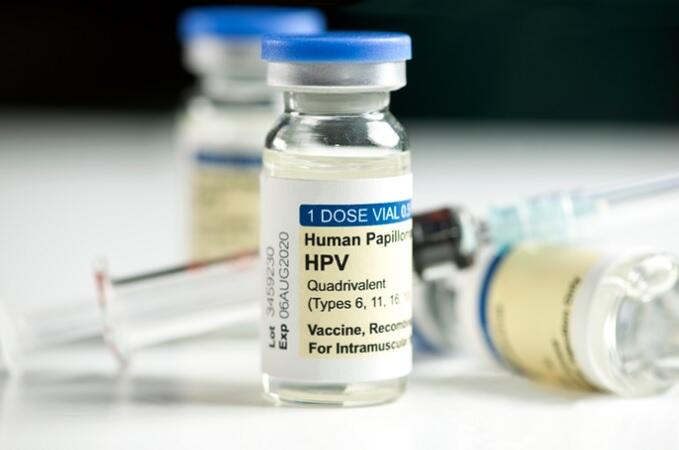On July 12, a research group led by Specially Appointed Assistant Professor Asami Yagi and Associate Professor (Lecturer) Yutaka Ueda of the Division of Obstetrics and Gynecology, Graduate School of Medicine at Osaka University announced that they calculated the birth fiscal year-specific cumulative vaccination rates (nationwide values) for routine HPV (human papillomavirus) vaccination. The results indicated that if the birth fiscal year-specific vaccination rates in fiscal year 2023 onward remain the same as the rate in fiscal year 2022 and the cumulative vaccination rate in the final fiscal year of routine vaccination is predicted to be 43.16%, which is far below the World Health Organization (WHO) target of 90%. The findings are expected to make a significant contribution to the planning of future cervical cancer control measures in Japan. The results were published in the international journal JAMA Network Open on July 17.

A public subsidy program for HPV vaccination, which has been offered to women to prevent cervical cancer, began in 2010, and HPV vaccination became part of the routine vaccination program in FY2013. However, media reports of adverse reactions and the suspension of the proactive recommendation by the Ministry of Health, Labour and Welfare (MHLW) led to a sharp decline in the vaccination rate, and routine HPV vaccination has been practically suspended.
Eligible people were provided with HPV vaccine information individually from FY2020, and the proactive recommendation was resumed from fiscal year 2022. A catch-up vaccination program was started simultaneously, but the vaccination rate recovery has been an issue.
Regarding the HPV vaccination rate, the MHLW only monitored the number of vaccinees by age at the time of vaccination in each fiscal year and has not shown the exact vaccination status reflecting the policy measures or the cumulative vaccination rate for each birth fiscal year. Therefore, the research group compiled the birth fiscal year-specific cumulative HPV vaccination rates (nationwide values) up to the fiscal year 2022 using the number of vaccines by age at the time of vaccination in each fiscal year.
The results showed that the vaccination rate differed significantly depending on the fiscal birth year, as 53.31%-79.47% (average 71.96%) for the vaccination generation (birth fiscal years 1994-1999), for which the public subsidy vaccination program was available; 0.84%-14.04% (average 4.62%) for the vaccine-suspension generation (birth fiscal years 2000-2003), of which vaccination rates sharply decreased due to the suspension of proactive recommendation; 10.20%-25.21% (average 16.16%) for the generation that received information individually (birth fiscal years 2004-2009); and 2.83% for the vaccine-resumed generation (birth fiscal year 2010), for which the proactive recommendation was resumed. The findings indicate that the vaccination rate has not recovered.
If the vaccination status from fiscal year 2023 onward remains the same as that in fiscal year 2022, the vaccination rate will not even reach half of the WHO target of 90% set for global cervical cancer elimination (4 or fewer cases per 100,000 people). In Japan, the vaccination rates for childhood and COVID-19 vaccines are high, while only the HPV vaccination rate is uniquely low. The research group concluded that future measures should include strengthening the recommendation to undergo cervical cancer screening and efforts to increase the HPV vaccination rate.
Ueda said, "The proactive recommendation for HPV vaccination has been resumed, but the vaccination rate has not fully recovered. Cervical cancer is expected to decrease in the vaccinated generation, for which the vaccination rates were high because the public subsidy vaccination program was available, but it is predicted to increase again. Normally, the younger generation should benefit from medical advances and enjoy improved health. In Japan, however, it is sad that a younger generation is exposed to a health threat because they could not access established preventive measures."
Journal Information
Publication: JAMA Network Open
Title: Human Papillomavirus Vaccination by Birth Fiscal Year in Japan
DOI: 10.1001/jamanetworkopen.2024.22513
This article has been translated by JST with permission from The Science News Ltd. (https://sci-news.co.jp/). Unauthorized reproduction of the article and photographs is prohibited.




